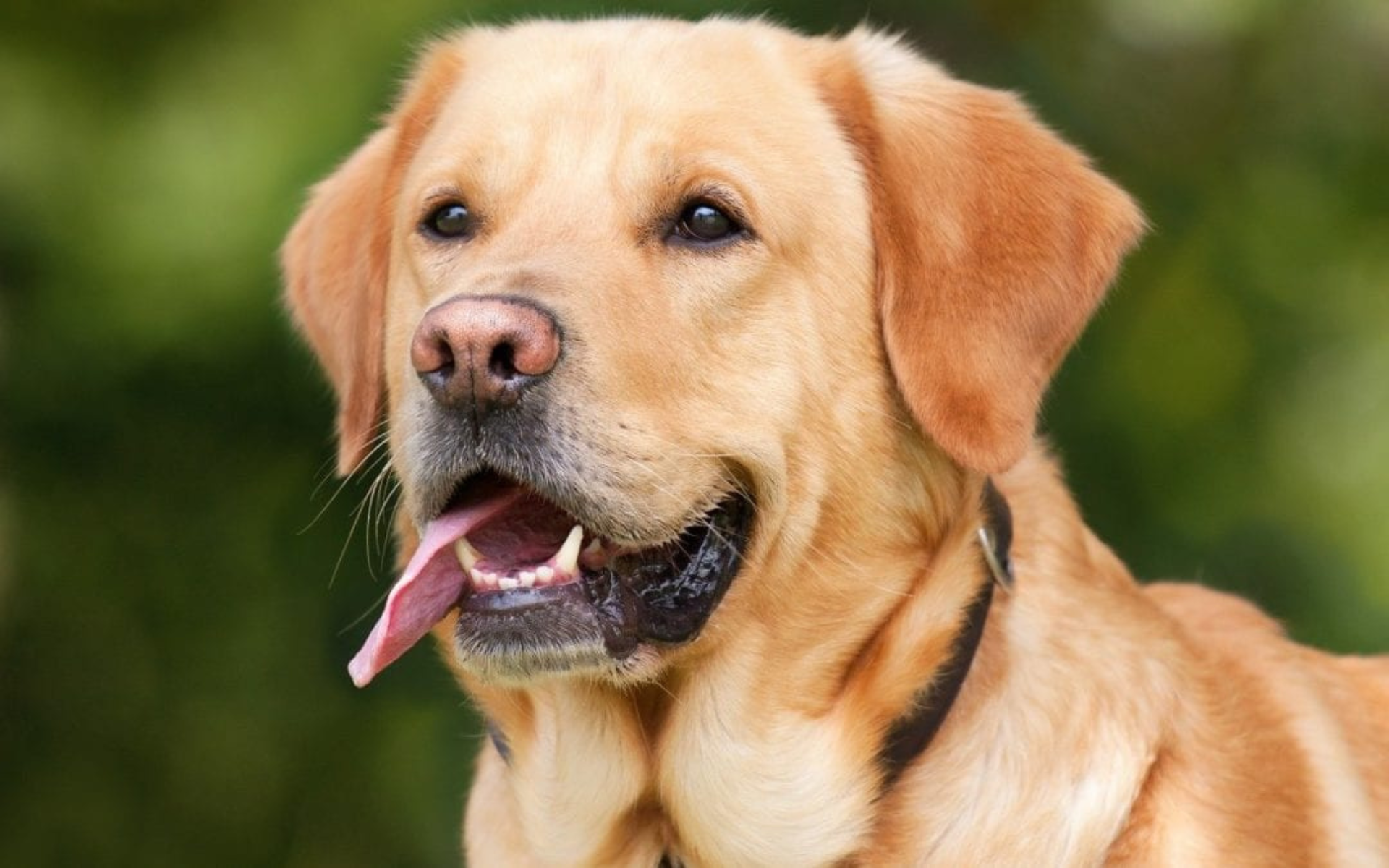
Patella Luxation
What is a patella luxation?
The patella, or knee cap, is a small bone buried in the tendon of the extensor muscles (the quadriceps muscles) of the thigh. The patella normally rides in a groove within the femur (thigh bone) in the knee. The patellar tendon attaches to the tibial crest, a bony prominence located on the tibia (shin bone), just below the knee. The quadriceps muscle, the patella, and its tendon form the “extensor mechanism” and are normally well-aligned with each other. Patellar luxation (dislocation) is a condition where the knee cap rides outside the femoral groove when the knee is flexed. It can be further characterized as medial or lateral, depending on whether the knee cap rides on the inner or on the outer aspect of the knee, respectively.
What animals are affected?
Patellar luxation is one of the most common orthopedic conditions in dogs, diagnosed in 7% of puppies. The condition affects primarily small dogs, especially breeds such as Boston and Yorkshire terriers, Chihuahuas, Pomeranians, and miniature poodles. The incidence in large breed dogs has been on the rise over the past ten years, and breeds such as Chinese Shar Pei, Flat-Coated Retrievers, Akitas, and Great Pyrenees are now considered predisposed to this disease. Patellar luxation affects both knees in half of all cases, potentially resulting in discomfort and loss of function.
Patellar luxation occasionally results from a traumatic injury to the knee, causing sudden severe lameness of the limb. However, the precise cause remains unclear in the majority of dogs but is likely multifactorial. The femoral groove into which the knee cap normally rides is commonly shallow or absent in dogs with non–traumatic patellar luxation. Early diagnosis of bilateral disease in the absence of trauma and breed predisposition supports the concept that patellar luxation results from a congenital or developmental misalignment of the entire extensor mechanism. Developmental patellar luxation is therefore no longer considered an isolated disease of the knee but rather a consequence of a complex skeletal abnormalities affecting the overall alignment of the limb, including:
- abnormal conformation of the hip joint, such as hip dysplasia (link to health topic)
- malformation of the femur, with abnormal angulation and torsion (rotation)
- malformation of the tibia
- deviation of the tibial crest, the bony prominence onto which the patella tendon attaches below the knee
- tightness/atrophy of the quadriceps muscles, acting as a bowstring
- a patellar ligament that may be too long
Because there is evidence that this condition is at least in part genetic, dogs diagnosed with patellar luxation should not be bred.
What are the symptoms?
Symptoms associated with patellar luxation vary greatly with the severity of the disease. This condition may be an incidental finding detected by your veterinarian on a routine physical examination or may cause your pet to carry the affected limb up all the time. Most dogs affected by this disease will suddenly carry the limb up for a few steps (“skip”), and may be seen shaking or extending the leg prior to regaining its full use. As the disease progresses in duration and severity, this lameness becomes more frequent and eventually becomes continuous. In young puppies with severe medial patellar luxation, the rear legs often present a “bow-legged” appearance that worsens with growth. Large breed dogs with lateral patellar luxation may have a “knocked-in knee” appearance.
- palpation of the knee under sedation to assess damage to ligaments
- x-rays of the pelvis, knee, and tibias to evaluate the shape of the bones in the rear leg and evaluate for hip dysplasia
- a three-dimensional computed tomography (CT or CAT Scan) to provide an image of the skeletal features of the entire rear legs. This advanced imaging technique helps the veterinary surgeon plan surgery in cases where the shape of the femur or tibia needs to be corrected
Over time, the knee cap may dislocate more and more often out of its groove, eroding cartilage and eventually exposing areas of bone which leads to arthritis and associated pain. Other structures in the knee may become more strained, potentially predisposing to a ruptured cranial cruciate ligament. In puppies, the abnormal alignment of the patella may also lead to serious deformation of the leg.
The grade of patellar luxation is determined by palpation. A grade 1 patella luxation is freely movable in the trochlear groove but is unable to be luxated. A grade 2 patella luxation will luxate out but return to the trochlear groove on its own. A grade 3 patella luxation is outside of the trochlear groove. The patella can be moved into the trochlear groove, but luxates when released. A grade 4 patellar luxation is unable to be moved into the trochlear groove.
Surgical repair options
Patellar luxations that do not cause any symptoms should be monitored but do not typically warrant surgical correction, especially in small dogs. Surgery is most often considered in grades 2 and over. Surgical treatment of patellar luxation is more difficult in large breed dogs, especially when combined with cranial cruciate ligament disease, hip dysplasia or excessive angulation of the long bones. One or several of the following strategies may be required to correct patellar luxation:
- Reconstruction of soft tissues surrounding the knee cap to loosen the side toward which the patella is riding and tighten the opposite side.
- Deepening of the femoral groove so that the knee cap can seat deeply in its normal position; this can be achieved by a variety of different techniques
- Transposing the tibial crest, the bony prominence onto which the tendon of the patella attaches below the knee. This will help realign the quadriceps, the patella, and its tendon.
- Correction of abnormally shaped femurs is occasionally required in cases where abnormal shape of the femur angle the knee cap to luxate most or all the time. This procedure involves cutting the bone, correcting its deformity and immobilizing it with a bone plate.
Postoperative care
Postoperative confinement is critical for both techniques to have a successful outcome. Your dog needs 10 weeks of confinement to allow the soft tissues and the bone to heal. If your dog is used to a crate, this would be ideal. Most dogs are not crate trained at this stage of their life. An alternative is an expandable playpen, home office, or laundry room. This prevents your dog from running to the front door when the doorbell
rings, hopping on the couch/bed, and being rambunctious with your other pets. When they are taken outside, they should be on a leash and under control at all times. Please restrict free access to flights of stairs and do not allow your dog to play with other dogs or run off leash for 10 weeks after surgery. Controlled post activity allow for two objectives to met – one is the soft tissues have time to reinforce themselves and to get used to their new tissue loads. The second objective is for the bone to heal. Both take 8
to 10 weeks to occur. If a patient is active too early, they can stretch/tear the soft tissues or break implants. Either of these can have a devastating impact on the repair and could require additional surgery.
Once recovered, patients return to an active lifestyle. Most regain 90 to 95% of their activity levels prior to injury. They will have stiff periods secondary to arthritis. These tend to be mild and they rebound very quickly without the need for medications.
Thank you for the opportunity to be a part of your team to provide for your pet’s surgical needs. We work closely with your regular veterinarian to ensure your family member returns to a an active quality of life.
Patella luxation surgery postoperative patient discharge instructions →
